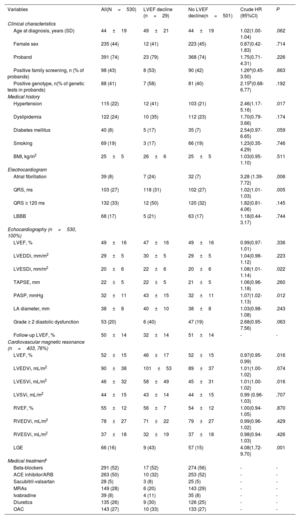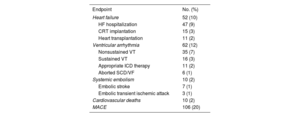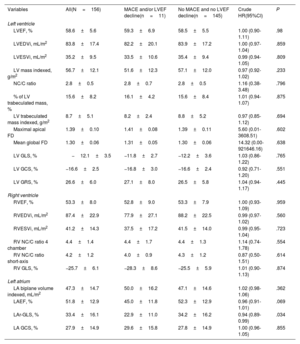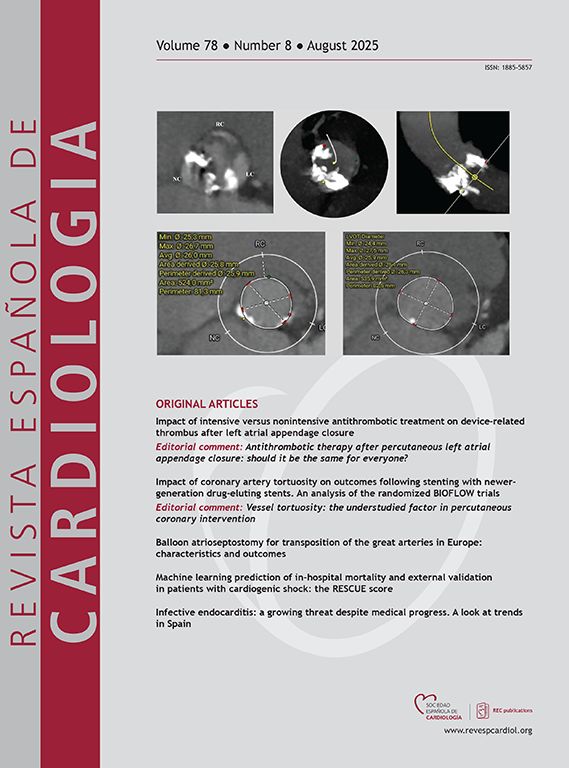
Defining the probability of cardiomyopathy in individuals with excessive trabeculation of the left ventricle (ETLV) is an unmet clinical need. Our aims were: a) to describe the incidence and predictors of left ventricular ejection fraction (LVEF) decline and its correlation with major adverse cardiovascular events (MACE); and b) to identify prognostic factors in low-risk individuals.
MethodsRetrospective multicenter study in patients with ETLV and suspected cardiomyopathy. Two endpoints were analyzed: a) LVEF decline (> 10% absolute decrease in LVEF with LVEF <50% at follow-up); and b) MACE, a composite of heart failure, ventricular arrhythmias, systemic embolisms, or cardiovascular mortality. Cardiovascular magnetic resonance core-lab analysis was performed in low-risk individuals (LVEF ≥50% and negative late gadolinium enhancement).
ResultsA total of 530 patients were included, with a mean age of 44±19 years and 44% were women. The mean LVEF was 49±16%. Over a median echocardiographic follow-up of 4.2 years, 29 patients (6%) showed a decline in LVEF. Late gadolinium enhancement (P=.004) and baseline atrial fibrillation (P=.006) were independently associated with LVEF decline. During a subsequent clinical follow-up of 3.8 years, 106 patients (20%) experienced MACE. Factors that remained associated with MACE after adjustment were baseline LVEF (P<.001), LVEF decline (P=.022), baseline atrial fibrillation (P=.001), and QRS ≥120 ms (P=.009). Among low-risk individuals, left atrial strain correlated with outcomes and distinguished subclinical cardiomyopathy from physiological excessive trabeculation.
ConclusionsIn ETLV, a decline in LVEF predicts cardiovascular events beyond baseline LVEF. In low-risk individuals, left atrial strain defines the probability of cardiomyopathy. A comprehensive assessment might provide valuable insights for differential diagnosis and risk stratification in this population.
Keywords
Identify yourself
Not yet a subscriber to the journal?
Purchase access to the article
By purchasing the article, the PDF of the same can be downloaded
Price: 19,34 €
Phone for incidents
Monday to Friday from 9am to 6pm (GMT+1) except for the months of July and August, which will be from 9am to 3pm










